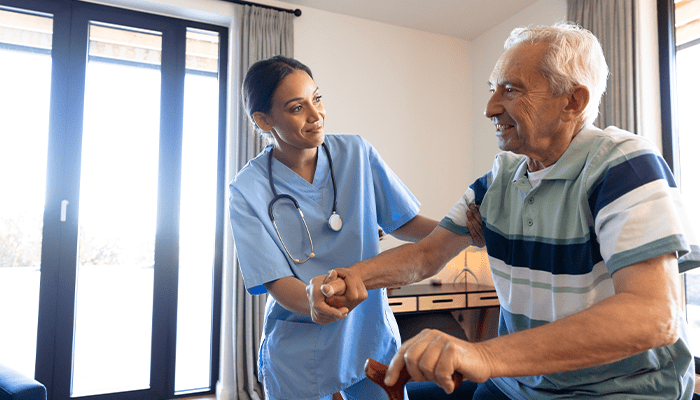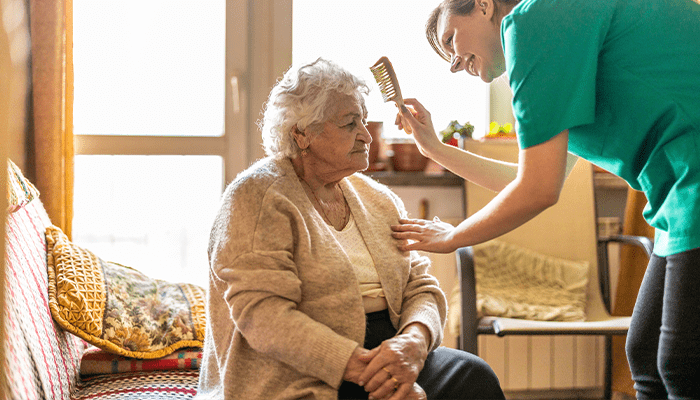
Novel Coronavirus - Are You Ready?
The novel coronavirus (COVID-19) presents a new challenge for senior living communities in the US. Although the virus has not reached pandemic levels, there have been confirmed cases within the senior living industry. Now is the time to prepare your team so you are ready to respond.
According to the Centers for Disease Control (CDC), the “Coronaviruses are a large family of viruses that are common in humans and many different species of animals, including camels, cattle, cats, and bats. Rarely, animal coronaviruses can infect people and then spread between people, such as with MERS-CoV and SARS-CoV. The virus that causes COVID-19 is spreading from person-to-person in China and some limited person-to-person transmission has been reported in countries outside China, including the United States. However, respiratory illnesses like seasonal influenza, are currently widespread in many US communities.”
The COVID-19 is primarily spread person to person through respiratory droplets between people who are in close contact with one another. This typically means that to become infected, people generally must be within 6 feet of someone who is contagious and come into contact with these droplets. Available resources indicate that symptoms of COVID-19 generally appear within 2 to 14 days after exposure and include fever, cough, and difficulty breathing. Reported cases have ranged from mild illness (similar to a common cold) to severe pneumonia that requires hospitalization. The symptom similarities between the COVID-19, common cold and flu make it difficult to differentiate, testing is required to confirm infection with the COVID-19.
While there is not yet evidence for spread from surfaces or objects (fomites), this may also be a possible mechanism of transmission. At present, COVID-19 is not felt to be spread through airborne transmission such as seen with tuberculosis or measles.
Preparation and prevention are key strategies in responding to the COVID-19. Below are basic action steps to guide your community in preparing, preventing and responding to potential COVID- 19 infections:
- Keep abreast of the COVID-19 situation
- Develop, or review, your community’s emergency plan. A COVID-19 outbreak in your community could lead to staff absenteeism. Prepare alternative staffing plans to ensure as many of your facility’s staff are available as possible.
- Share information with employees. Educate staff regarding what is currently known about COVID-19, the potential for surge, your facility’s preparedness plans and infection control practices to be followed.
- Share information with residents and families. Update your residents and their families with the information regarding COVID-19 and changes in the facility’s policies regarding outside the facility appointments, the use of telephone to provide non-urgent resident care and visiting restrictions. Provide reminders of basic infection control practices. Consider using your facility’s website or social media pages to share updates.
- Ensure staff, residents and visitors are following basic infection control practices such as:
- Covering coughs and sneezes with a tissue or arm.
- Frequent handwashing with soap and water for a minimum of 20 seconds or use of hand sanitizer if soap and water are not available.
- Avoiding touching eyes, nose or mouth.
- Cleaning and disinfecting frequently touched objects and surfaces with a disinfectant effective against coronavirus strains.
- Appropriate use of PPEs, including a NIOSH-95 facemask or respirators when caring for confirmed cases of COVID-19.
- Perform analysis of available supplies. Ensure sufficient supply of personal protective equipment (PPEs), hand cleansing agents and disinfectants.
- Isolate/cohort individuals with confirmed cases of COVID-19 and those residents displaying symptoms of COVID-19.
We cannot foresee the total impact of the COVID-19 virus will have in our senior living healthcare industry, but through history we do know an ounce of prevention is worth a pound of cure.
Please join us for a complimentary webinar hosted by our insurance and clinical team this Thursday, March 5, 2020 at 1pm EST to discuss how best to protect your residents, staff, families, and assets by registering here.
Sources:
CDC: https://www.cdc.gov/coronavirus/2019-ncov/specific-groups/guidance-business-response.html and https://www.cdc.gov/coronavirus/2019-ncov/healthcare-facilities/steps-to-prepare.html
Ohio Department of Health: https://odh.ohio.gov/wps/portal/gov/odh/know-our-programs/novel-coronavirus/resources/novel-coronavirus-fact-sheet
Featured News & Insights

The next five years will be critical for senior living and nursing home providers. Shifts in health system consolidation, CMS programs, and hospital partnerships are already reshaping how skilled...

Watch the Webinar Replay In this webinar, we’ll explore the structural changes that are adversely impacting nursing home skilled care revenues. This session will briefly touch on the impact of ACO...

If your senior care facility is struggling with survey performance, you may already be on CMS's radar. The Special Focus Facility (SFF) designation is more than just a label. It's a warning with real...